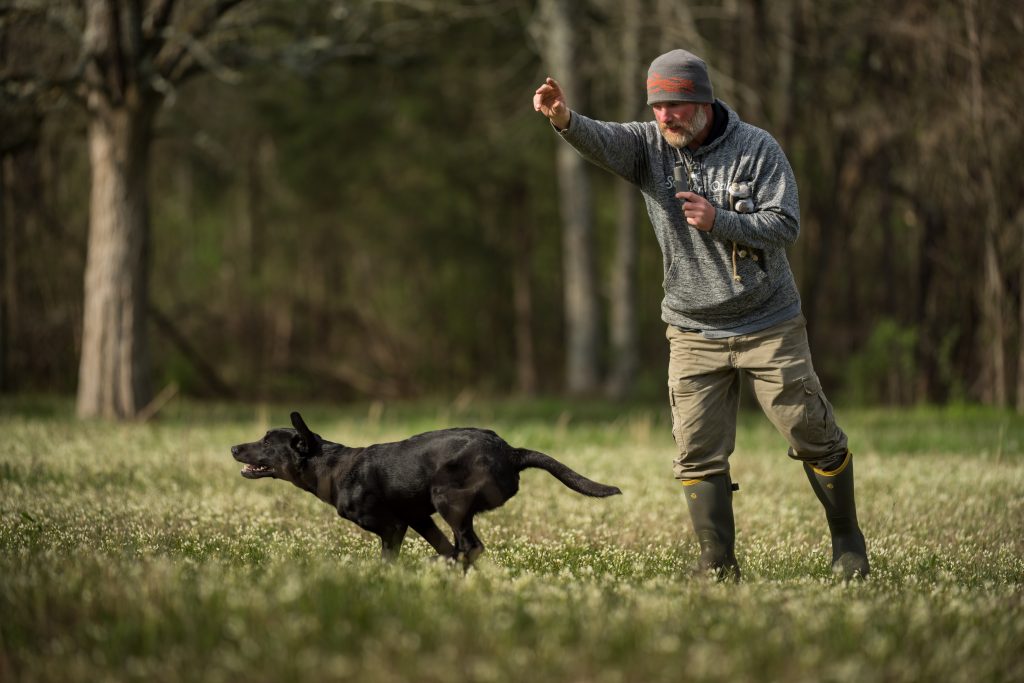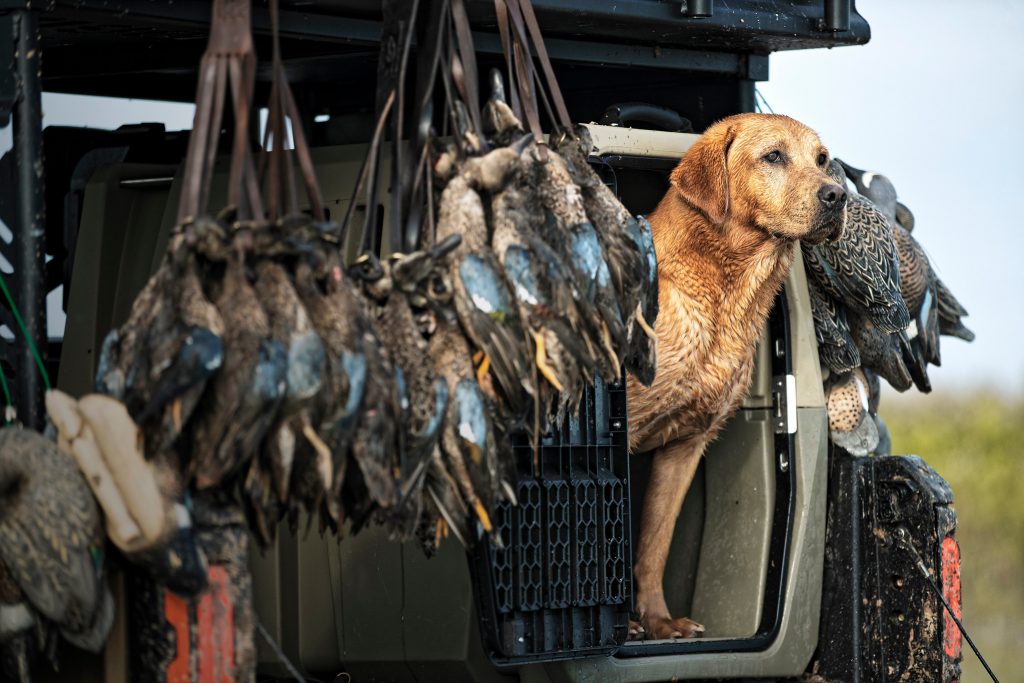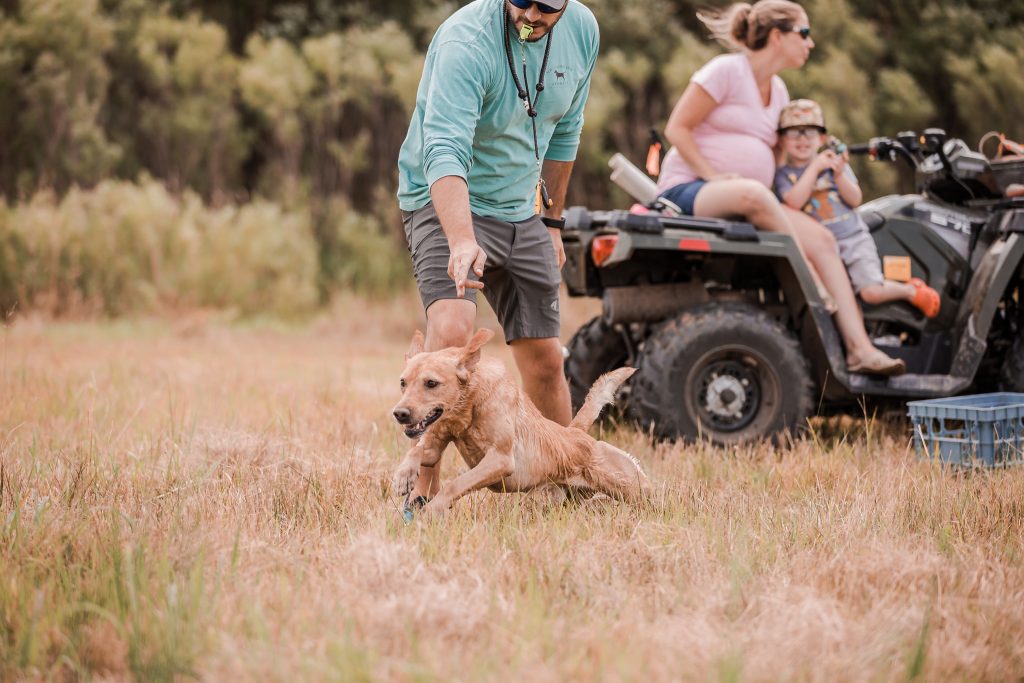After highlighting the causes of many distinctions in part one, let’s continue discussing the differences between American and British labs – and note the importance of avoiding any language that would claim that one is better than the other.
Distinctive, Not Superior
Highlighting the distinctions between these two types of labradors is not to say that one is better – although one might be preferred based on the specific application and lifestyle of the potential owner. As a breeder, Southern Oak Kennels deals exclusively with British field-bred labradors. I have a ton of respect for what handlers are able to accomplish with American field-bred labradors. It is incredible to see a dog pick multiple marks, all a few hundred yards across various factors, and run key-hole blinds out to distances that would seem impossible. It is certainly an incredible achievement to reach any level of success in AKC field trials or hunt tests.
I think that projecting one style of Labrador to be better than the other, as well as overstating the differences between American labradors and their British counterparts, does the entire breed a disservice. As I said in part one, there is much overlap between the two.
Training Programs And Stimulative Responses: American and British Labs
As far as differences go, I believe the most important difference revolves around training programs and a dog’s desired response to stimulation. American training programs are largely based on stimulation/compulsion (e-collar), and the dogs are taught to respond to stimulation by going forward (Force Fetch). Now, there is certainly much more to this training philosophy than my oversimplification here. However, it is the case that American labradors’ response to stimulation is often driving, excitement, want-to, go, whatever one wants to call it. British programs are built on a completely different philosophy. They breed dogs with high drive, and then they put control into the dog with a “calmness leads to reward” style of training. They present high levels of stimulation, and the dog must respond with complete control in order to get the reward, which is a retrieve. Based on these two desired responses to stimulation, American and British dogs have developed certain characteristics throughout generations of selective breeding.
British dogs are known for having an “off-switch”, which means they are able to have high levels of energy in the field yet remain calm and collected in the house. Because British dogs have to spend so much time honoring in a trial, they must be able to “turn off” the intensity. Otherwise, they would not be able to make it to the final leg of a trial. I have heard stories of dogs being in the line for up to an hour and a half, while birds are being shot on a drive before any retrieves are made. These dogs are not on the lead, and any breaking or noise will disqualify them. American dogs must remain under control, on lead, behind a holding blind for only a minute or two before running in a test or trial. Then, after running their marks and blinds, they are often asked to honor one other dog on a retrieve. After this, they are put up until the next round. They maintain a high level of focus and drive while on the line, but they only have to maintain calm control for a short period of time. Therefore, it is not as common to find the same off-switch on American labradors. I have seen several American labradors with an off-switch. It is just typically the exception rather than the rule.
Trained For Quiet: British Labs
American dogs have developed a tendency to make noise. Graze any US labrador training forum for two minutes and you will find dozens of posts on how to get a dog to be quiet in the blind. Training with such a heightened level of excitement can lead to this sort of behavior. For some, this is not a problem, so long as it is not excessive, because they desire such an intense amount of drive. For others, a noisy dog drives them (and those who share their blind!) up the wall. British Labradors are immediately disqualified from a trial for any noise-making. This is not to say that they do not bark, which is a common misconception. Pull into our kennels and walk toward the dogs without one of our trainers present, and one will quickly see that British labradors do bark. They may not bark nearly as much, but they do bark! They do not, however, make any noise in the field. Again, this is simply the result of generations of breeding dogs having a certain response to stimulation.

Trained To Mark: American Labs
American labradors tend to make better marking dogs than British labradors. It is a fault/deduction to handle (help) a dog on a mark in a trial or test here in the USA. Therefore, dogs are trained to develop a ton of confidence in their ability to dig out a mark. American breeding programs look specifically at marking ability in selecting their sires and dams. British handlers are expected to handle a dog on mark if the dog even hints of leaving the area of the fall. This is due to the fact that British trials are held over live game, usually upland, and it is far better to handle a dog than to have a dog disturb cover outside the area and flush game while out of gun range. British dogs also rarely mark multiples in a trial, so the overall ability to run multiple marks is typically better among American labs.
The Common Build
British shooting sports are highly traditional. Their shoots are held at estates, and much of what takes place today is nearly identical to how it would have been nearly a century ago. They have also worked hard to maintain the same standards in the size of Labrador retrievers. British labradors range between fifty and eighty pounds, and are generally smaller than American labradors. American breedings have moved toward a slimmer, taller, more athletic build. They tend to have a more narrow head and less of a forehead stop. British dogs are commonly shorter, thicker in the neck and shoulders, and have a larger square head with a more distinguished forehead stop. Both British and American labradors look far more athletic than labradors bred for the confirmation ring.
It Comes Down To Preference: American versus British Labs
Overall, many of these differences will come down to personal preference. The most important thing to consider is the overall reputation and available health testing of the breeder, whether you are in the market for and American or a British lab.
There are so many different ways to enjoy Labrador retrievers, whether for waterfowl, upland, hunt tests, field trials, or just a family companion. There are many reasons why labradors have remained the most popular breed in America for twenty-five years. Their ability to become a part of a family, adapt to new environments, learn desired skills, and retrieve game is second to none. We encourage everyone to do thorough research on not just the overall breed but each individual distinction to be expected in a certain breeding program when considering a Labrador, and we hope this series has been helpful in that endeavor.




